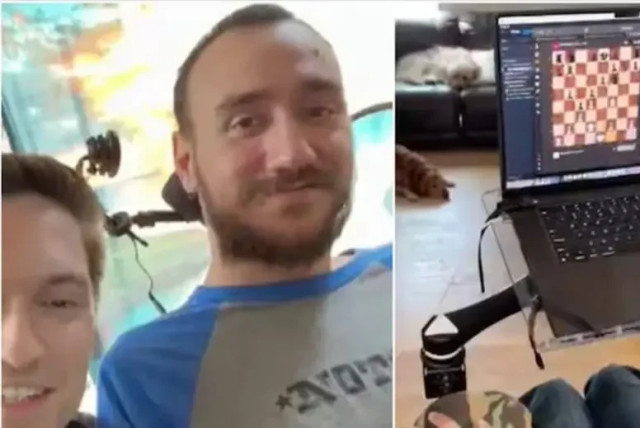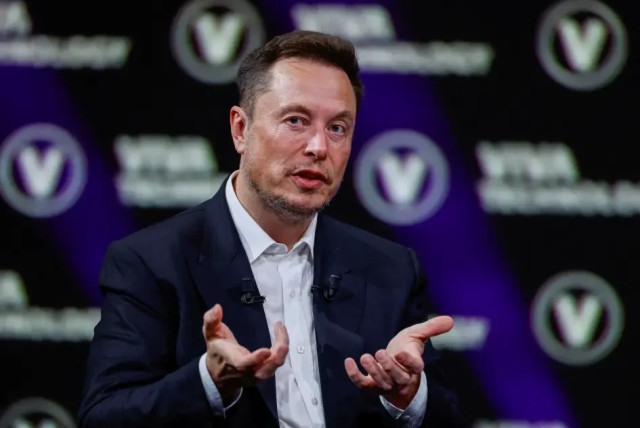Elon Musk's brain chip: restoring sight to blind monkeys

Elon Musk's brain chip restores sight to blind monkeys, promises superior vision to human eye; research breakthroughs continue.
Another research breakthrough in the development of Elon Musk's brain chip: the billionaire claims that the chip was able to restore sight to blind monkeys, and that in the future it will lead to better quality vision than the human eye. Last weekend, the paralyzed chip implanted was seen playing chess and even tweeting with the power of thought alone.
Despite the raised eyebrows and skepticism in the world of science, experience shows that it is worth believing Elon Musk's words: after a weekend in which the brain chip implanted, 29-year-old Nolan Arbo, paralyzed from the shoulders down, was seen playing live chess and even managed to tweet, this by the power of thought alone, It seems that Musk's fantasies are coming true.
Now Musk asserts in a new tweet that the brain chip also "cures blindness" and already "works in monkeys." In a tweet he posted on the X network, the billionaire CEO of the chip developer Neurlink wrote: "I must point out that the implant is already working in monkeys. The resolution will be low at first, like early Nintendo graphics, but eventually it may be better than normal human vision. Also, no monkey died or was seriously injured by the Neuralink device."
It is understood that without scientific evidence it is difficult to back up Musk's claims for the time being, but if his claim is indeed proven, it will be another breakthrough that proves that Neuerlink is indeed leading the same medical revolution that Musk predicted.
For many years researchers have been working on a brain-computer interface that could strengthen vision. For example, from 2020, scientists from Melbourne, Australia, built the world's first "bionic eye" using a brain implant. In 2021, scientists in Spain implanted an "artificial retina" attached to a pair of glasses that can detect light, which it processes into electrical signals and transmits this data to the brain.
As Musk pointed out, the resolution of these devices is still quite low, and researchers are looking for ways to increase the number of "pixels" that allow patients to recognize faces, for example. But Musk's claims also leave many questions unanswered. Were the monkeys born blind or did they lose their sight later? How much of their vision is still intact? Most current brain computer interfaces seek to reconstruct vision that was present. In other words: did the company have to start from scratch, or reconnect the pathways between the eyes and the brain?
Without knowing how the BlindSight chip actually works, all one can do is guess at this point. If Neuralink bypasses both the eye and the optic nerve, the device may lead millions of blind people around the world to a new future where they can see. Musk's claim that the implant will succeed in "surpassing normal human vision" is also a grandiose plan. Remember, not all of Musk's statements have come true in the past, after he promised that he would send humans to Mars and that an autonomous car would lead to completely autonomous driving.
I should mention that the Blindsight implant is already working in monkeys. Resolution will be low at first, like early Nintendo graphics, but ultimately may exceed normal human vision.(Also, no monkey has died or been seriously injured by a Neuralink device!)
— Elon Musk (@elonmusk) March 21, 2024
As you may remember last year, the US Food and Drug Administration approved Neuralink for the first trial to test the implant on humans. The company stated that they intend to eventually allow the paralyzed to use a computer or cell phone using only the power of thought. The company's chip includes electronic components hermetically sealed inside a device the size of a large coin. From this chip implanted inside the brain, several dozens of extremely thin wires protrude directly into the brain tissue. Signals from the chip are sent via Bluetooth to a brain-computer interface that will allow a person, for example, to control a cursor on the screen or even move a robotic limb implanted in his body.
The Neuralink chip is inserted into the body using a surgical robot specially designed to implant the implant and the 64 flexible and thinnest connected wires on which 1,024 electrodes record neural activity. The robot has five built-in camera systems and uses optical technology for non-invasive imaging of brain tissue. The robot uses a thin needle as a human hair that inserts the wires into place in the brain.
In the past, Musk explained that in his vision a paralyzed person could become almost independent when he controls his environment, communicates and even activates means, can move and even move paralyzed limbs - all this with the power of thought alone. The chip, Musk hoped, could even help restore sight to the blind. Similarly, translating neural signals into external movement should help patients with severe neurodegenerative diseases like ALS communicate with the environment by moving a cursor and typing with their brains.
However, the road to the goal is fraught with quite a few bumps: About two years ago, the Reuters news agency published that the Neuralink company accelerated animal experiments at too high a rate, in order to receive early approval from the FDA for human experiments, which raised concerns about the proper safety of the experiments. In one case two years ago, the company implanted the wrong size components into 25 out of 60 pigs. All pigs were then euthanized. Federal agencies tested whether some of the chips were contaminated after they were removed from monkey brains. Another investigation concerned the supervision of the experiments on the animals and the concern for the welfare of the animals being tested.
Jerusalem Post Store
`; document.getElementById("linkPremium").innerHTML = cont; var divWithLink = document.getElementById("premium-link"); if (divWithLink !== null && divWithLink !== 'undefined') { divWithLink.style.border = "solid 1px #cb0f3e"; divWithLink.style.textAlign = "center"; divWithLink.style.marginBottom = "15px"; divWithLink.style.marginTop = "15px"; divWithLink.style.width = "100%"; divWithLink.style.backgroundColor = "#122952"; divWithLink.style.color = "#ffffff"; divWithLink.style.lineHeight = "1.5"; } } (function (v, i) { });


